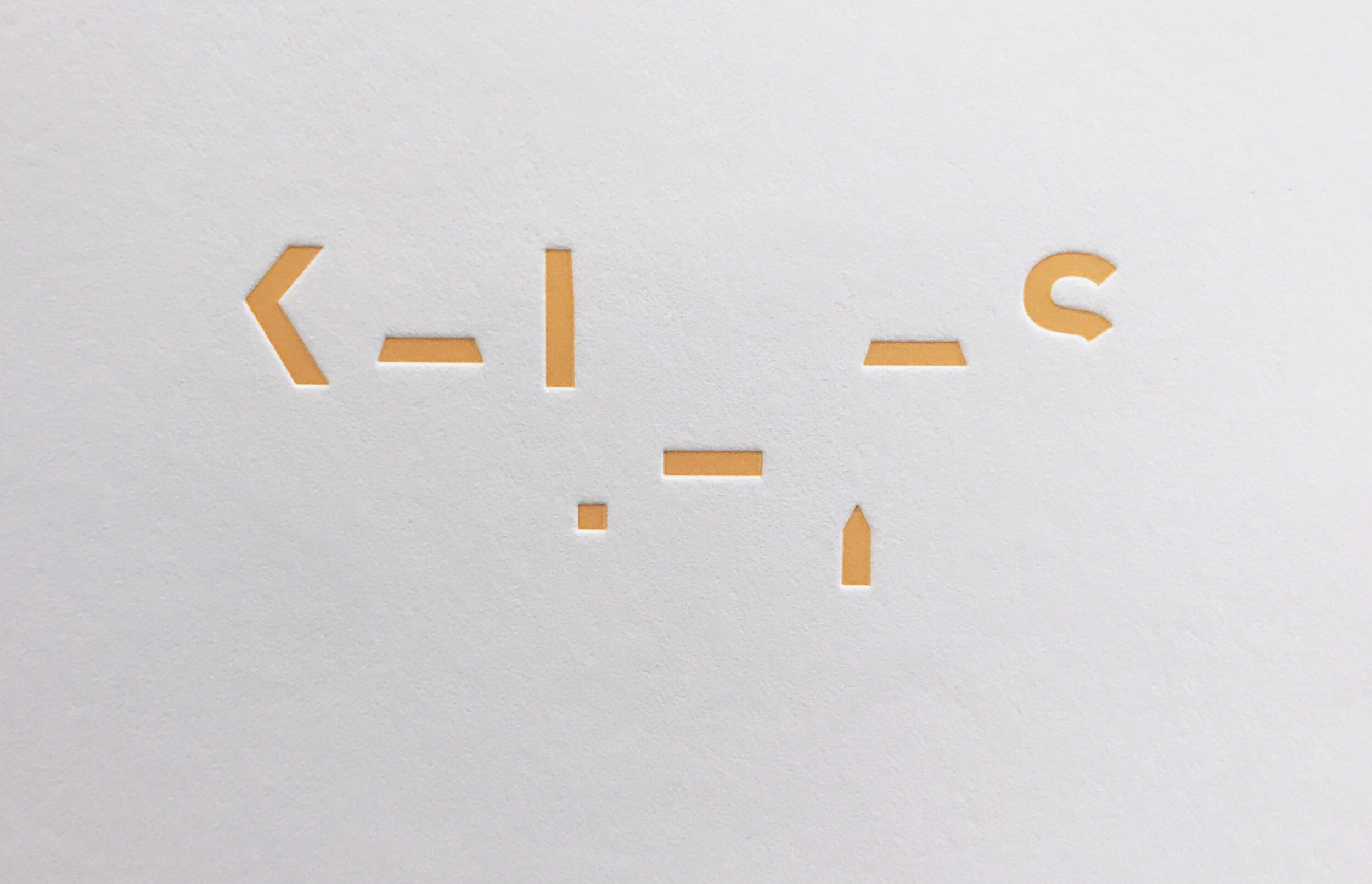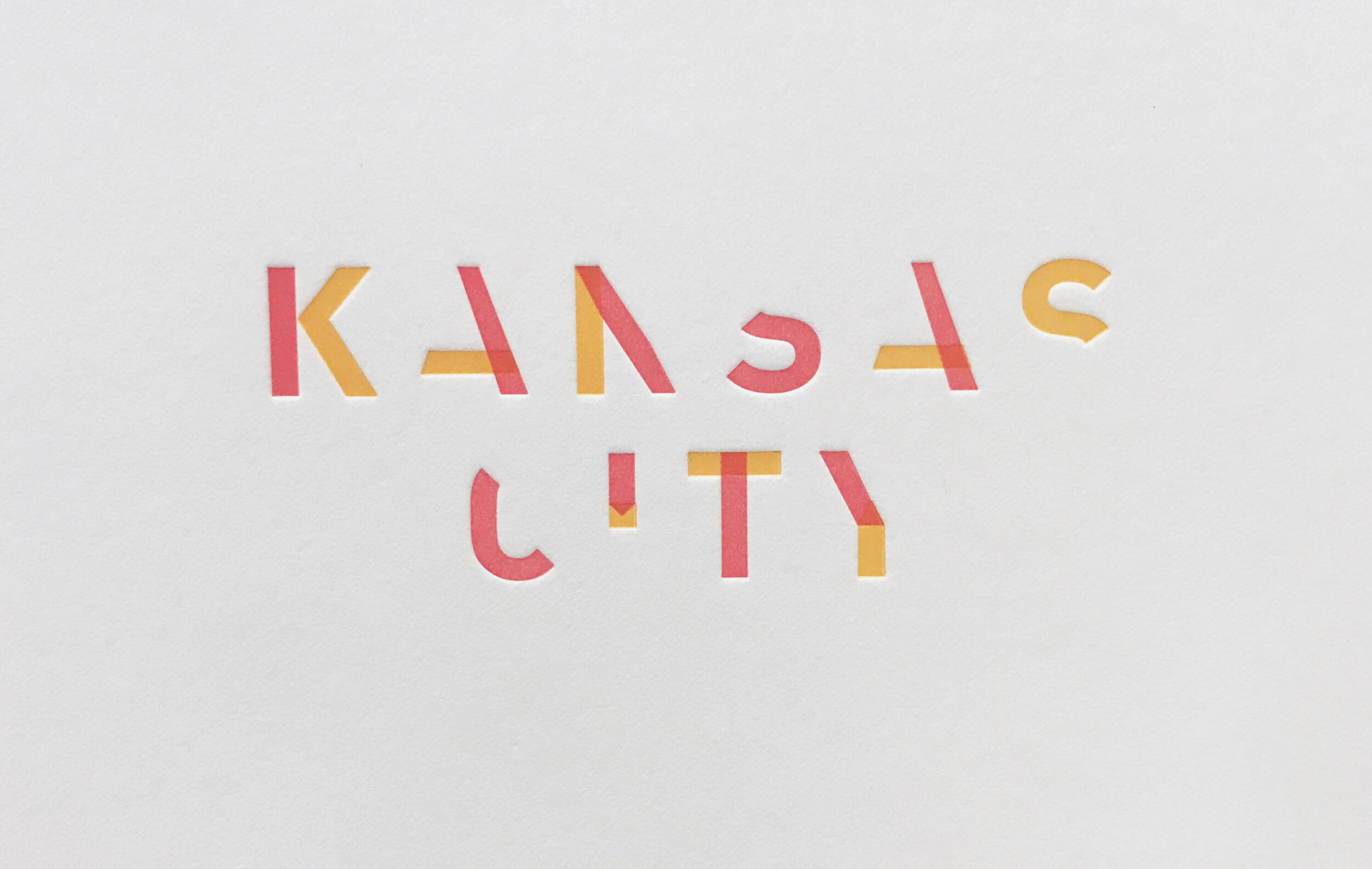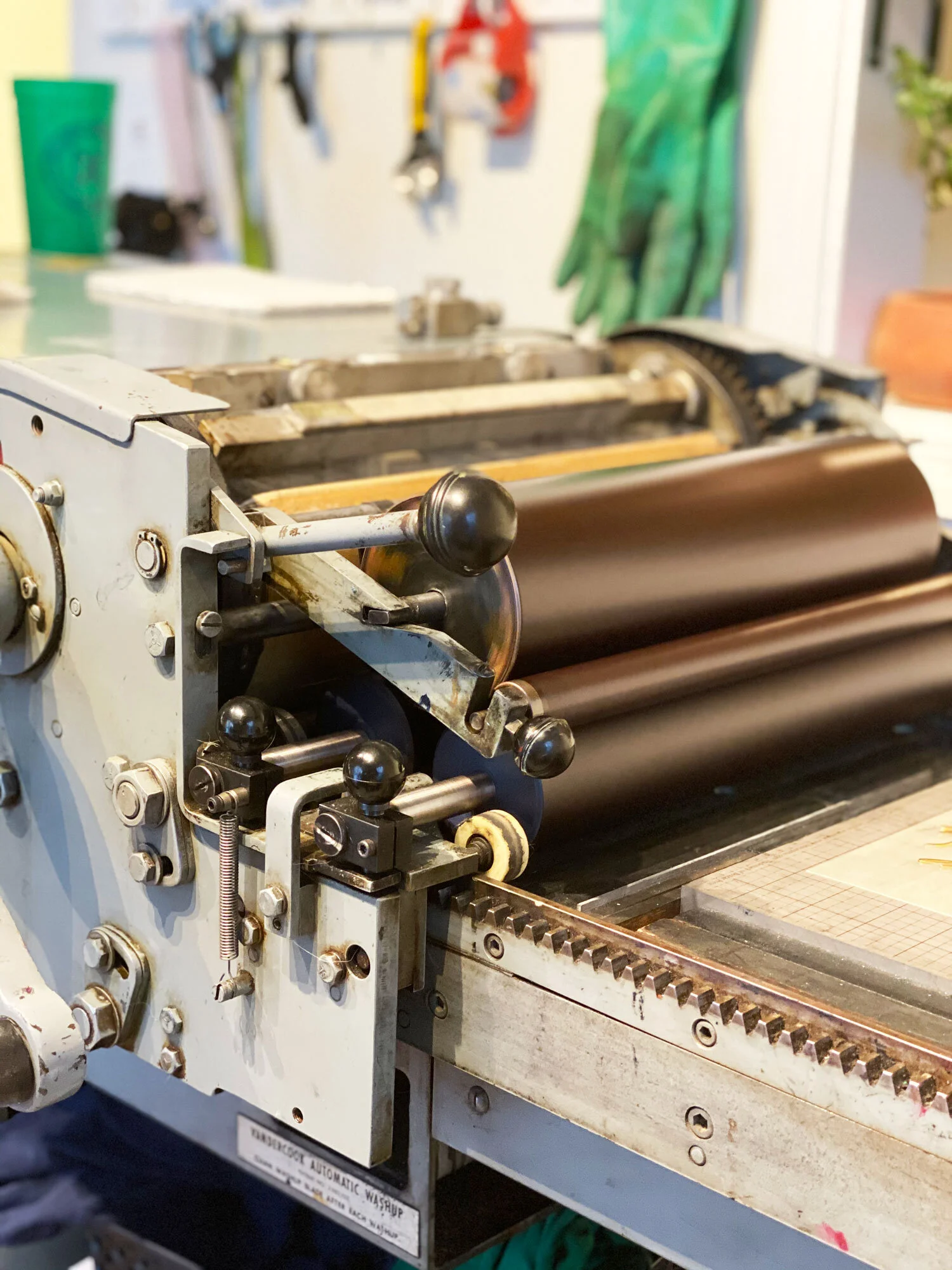What is Letterpress?
Let's try to break this down as simply as possible:
“Letterpress is the process of pressing raised, inked surfaces onto paper.”*
One Color At a Time
Think of letterpress as a really fancy stamp, with an automatic system for inking so that the "stamp" (aka your design) is inked perfectly every time it passes over the stamp.
Similar to a stamp, you can only print one color at a time due to that inking system. To print more than one color means you have to print the first color, clean the press, set up the second color, and then print the second color. Every new color adds more time, which is why printing 2 or 3 colors is more expensive than just 1.
But Wait, There’s More!
Letterpress ink is transparent. So if you print a yellow first and then a red second, anywhere that those colors overlap, you will get an orange color. This is how we can be creative and work more color into a 2-color design, as you can see in the example below.



Blind Deboss
Often referred to as blind embossing as well, this is when you print a design with NO ink, leaving just the impression of your design on the paper. With letterpress, it is technically a deboss since the design is being pushed into the paper rather than raised (that is an emboss).
Blind emboss letterpress
Now let’s talk about impression.
Impression is the texture you see on any letterpress-printed piece. It’s the indention on the paper from the design getting pressed into the paper. You can have a very deep impression or a very light one; it just depends on what look you are going for.
In the example below, for the flower, I used a slightly lighter impression so that I could print the text in deep red over the flower and press that even deeper into the paper. This is done by adding more or less packing paper underneath my printed sheet so that it presses into that design more or less when printing.
Getting a better impression generally means you need more force behind your press to really punch that design in. Some letterpress machines make this easier than others.
Letterpress impression example
Letterpress Plates:
Letterpress was invented in 1455 when Johann Gutenberg created movable type. Back then, people had to set every word of a text letter by letter with these individual type pieces. Thank goodness, it isn't as time-consuming now.
Modern technology now allows letterpress printers to make photopolymer plates. How is it done? I design everything in Illustrator. I then save all my designs in solid black and send them to my plate maker. They then take that file, invert it to its negative, and make the plate using exposed light through the negative. This ends up being a semi-hard plastic "plate" that I can use to print. And don't worry—it is recyclable!
Example of a letterpress photopolymer plate. Recognize this image from my impression example above?? :)
I hope you now have a better understanding of letterpress basics! If you have any questions or if there is something else you want to know, comment below, and I will do my best to answer!
Want to learn how to letterpress print?
Join me in my online course, Makeready! I’ll be teaching you all the tools and techniques you need to know to start printing on your own.
– LEARN MORE –
*Jim Sherraden, Elek Horvath, & Paul Kingsbury. Hatch Show Print. Chronicle Books, 2001.




